#indigenous territory
Explore tagged Tumblr posts
Photo
Another great link to find out whose land you’re on is https://native-land.ca - it’s really well-designed and provides links to more information on nations, languages, and treaties outlined on the map.
I’m currently living on Ramaytush/Ohlone land and grew up on Tatavium, Tongva, and Chumash land. These people are still here and are still fighting for self-sovereignty within their own homeland. There are many Indigenous organizations and projects you can help support - I know that Sogorea Te’ Land Trust (https://sogoreate-landtrust.org) is doing incredible work near me in the Bay Area (Ohlone/Villages of Lisjan land) for land back/rematriation initiatives and cultural revitalization.
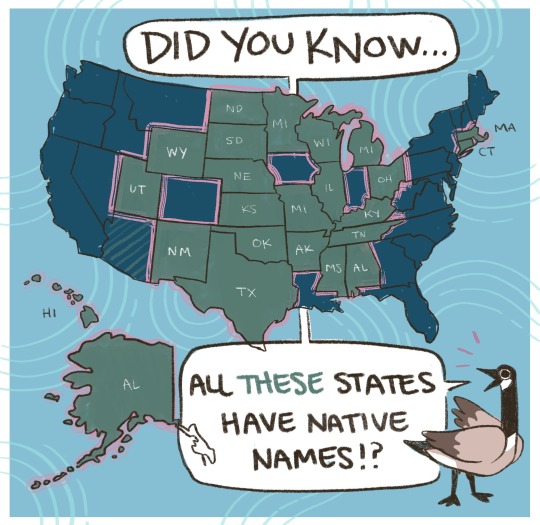
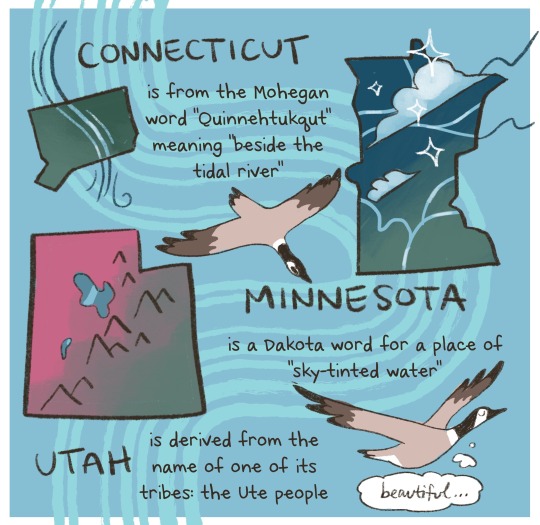
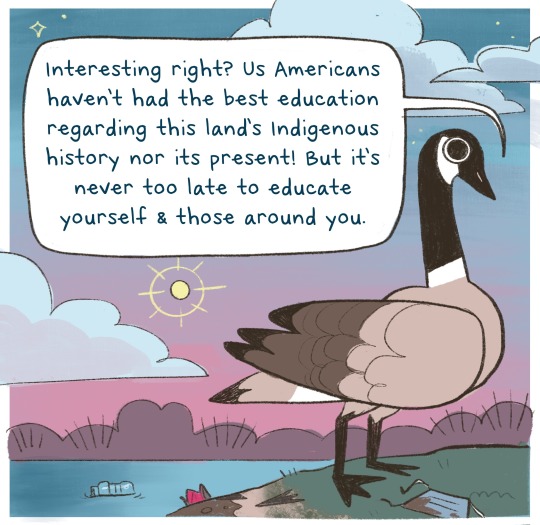


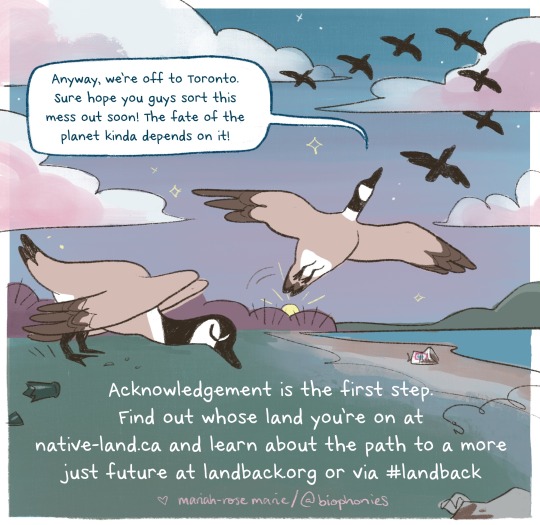
ah, i’m so bad at posting here. acknowledging this Day of Mourning from the lands of Kiikaapoi, Peoria, Potawatomi, Myaamia & Ochethi Sakowin people, aka Chicago, derived from a native word for garlic (mmm…) which is really suitable for me because I live here now 🌱🧄✨
whose.land are you on? talk about it over dinner this weekend with your fam & what it means to give the #landback. considering everything, listening & learning from indigenous people is the least you can do.
#indigenous#landback#land back#ohlone#ramaytush#tetavium#tongva#chumash#rematriation#turtle island#i realize it’s not november yet but i don’t want to wait to reblog#indigenous territory#indigenous land#indigenous sovereignty#comic#art#borders#sogorea te’ land trust#villages of lisjan#lisjan
96K notes
·
View notes
Text
0 notes
Text

#TheRavenKeeper
I'm still very busy but I always have the time between 2 trails for a quick stop to say hi.
So Hi Folks! And hope you all having a good day so far.
#The Raven Keeper#Mohawk Territory#Traditional Homeland#Mohawk Native Reserve#Sacred Land#Native Indigenous#Red Power Movements#Wildlife Need Protection#IUCN#International Union for Conservation of Nature#ECCC#Environment and Climate Change Canada#NCC#Nature Conservancy of Canada#Raw Nature#Nature Photography#Nature Canada#Wildlife Photography#Mountainous Parts of the Northern Hemisphere#Canada#The RavenKeeper
374 notes
·
View notes
Text
A new exhibit on dog sled blankets currently on display in Fort Smith, N.W.T., blends artistry and tradition.
The exhibit, called "Tāpis: A Love Letter to Our Dog Kin," showcases nine dog blankets made by six Indigenous artists. The Northern Life Museum & Cultural Centre in Fort Smith is hosting the exhibit.
To accompany the travelling exhibit, the museum is also displaying two historical sets of dog blankets from its collection, which were made in the 1940s. [...]
[The curator of the museum] said the exhibit isn't just about showcasing beautiful beadwork and preserving a part of northern history. The project also highlights the cultural importance of dog teams and the artistry behind the unique blankets. [...]
Continue Reading.
118 notes
·
View notes
Text















Milestone Monday
Sacred Lands, Broken Promises
On this day, January 27, 1825, the U.S. Congress sanctioned Indian Territory, which is located in what is now Oklahoma. This decision was part of the United States’ broader policy of westward expansion, driven by the belief in Manifest Destiny—the idea that the U.S. was destined to expand across the North American continent. It laid the groundwork for the Indian Removal Act, which President Andrew Jackson signed into law in 1830.
One of the most infamous outcomes of this policy was the Trail of Tears. This tragic event involved the forced relocation of Native Americans from their lands during the 1830s. The term particularly refers to the Cherokee Nation's tragic journey in 1838-1839, where thousands of Cherokee people were marched westward under harsh conditions. The journey was marked by immense suffering, including exposure to harsh weather, disease, and inadequate supplies. Estimates conclude that thousands of Native Americans died as they were uprooted from their ancestral lands to this designated territory.
The relocation and its consequences had lasting impacts on Native American communities, and it remains a significant and painful chapter in U.S. history. The era highlighted the conflicts between the U.S. government and Native American nations, as well as the broader issues of sovereignty, land rights, and cultural survival.
P. S. Sorry (not sorry), Mr. Jackson, we’re still here!
The images featured come from:
Rhymes of the States by Garrett Newkirk with drawings by Harry Fenn after sketches by the author. It was manufactured by De Vinne Press and published by Century Co. in New York in 1896. The work contains prose and verse that is intended to be entertaining and educational. However, the piece on Indian Territory is a prime example of colonial discourse.
Pushing the Bear: A Novel of the Trail of Tears is a historical novel by Diane Glancy (Cherokee). Our copy is a first edition published by Harcourt Brace (New York) in 1996. The novel tells the story of Cherokee removal and their journey along the Trail of Tears.
Songs from the Native Lands: poetry by Victoria Lena Manyarrows (Tsalagi/Eastern Cherokee), published by Nopal Press (San Francisco) in 1995. The poems featured are titled We Remember/The Trail of Tears and Unthanksgiving/We Will Not Be Invisible.
View more posts from our Native American Literature Collection.
View more Milestone Monday posts.
-- Melissa (Stockbridge-Munsee), Special Collections Library Assistant
#milestone monday#milestones#indian territory#indian removal act#american indians#native americans#indigenous americans#trail of tears#cherokee nation#manifest destiny#andrew jackson#us history#sovereignty#Rhymes of the States#Garrett Newkirk#Harry Fenn#De Vinne Press#Century co#Pushing the Bear: A Novel of the Trail of Tears#Diane Clancy#Harcourt Brace#Songs from the Native Lands: poetry#Victoria Lena Manyarrows#Nopal Press#Native American Literature Collection#Indigenous American Literature Collection
64 notes
·
View notes
Text
no way they’re trying to arrest literal indigenous americans 😭
where are you gonna send them, fucking beringia?
#literally the only people actually from the territory of the united states#the stupidity of the right knows no bounds#dems are included btw#liberals dni#beware i am a scary tankie stay back#us politics#united states#usamerican politics#donald trump#elon musk#jd vance#politics#indigenous#native american#indigenous american#trump deportations#ice
33 notes
·
View notes
Text
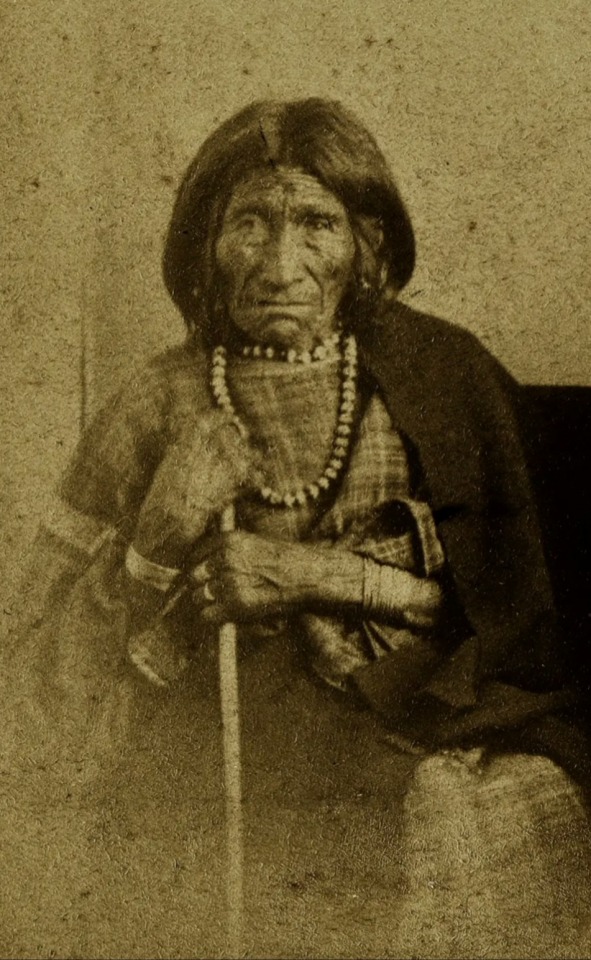
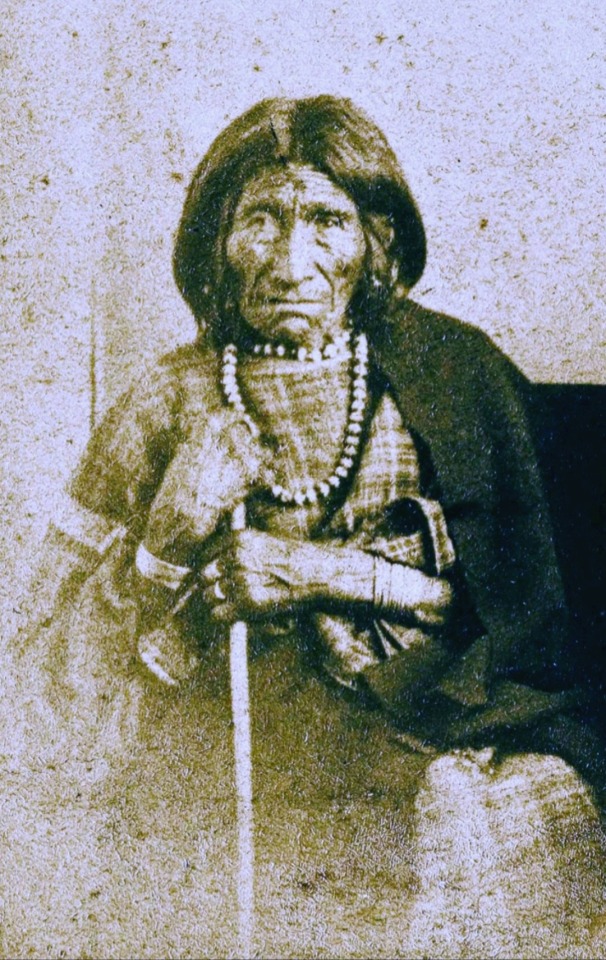
Her Holy Door (a.k.a. Umpan Wastewin, a.k.a. Good Elk Woman, the wife of Jumping Bull and the mother of Tȟatȟáŋka Íyotake, a.k.a. Sitting Bull. Photograph taken at Fort Randall in Dakota Territory, 1881.
#her holy door#good elk woman#umpan wastewin#hunkpapa#lakota#sitting bull#tȟatȟáŋka íyotake#1881#19th century#dakota territory#fort randall#indigenous#native american
13 notes
·
View notes
Text
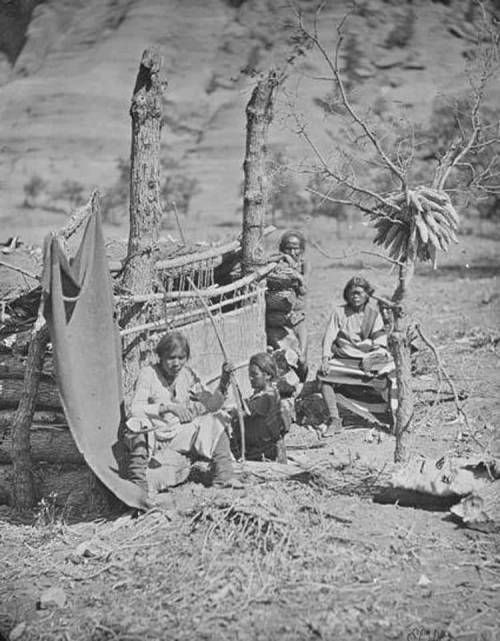
Navajo family group in Canyon de Chelle, New Mexico Territory; woman weaving at loom, man holding bow and arrow, ca. 1873.
Photographer: Timothy H O'Sullivan
#alarmy#reddit#wildwestpics#jasonvoorhees25Photographer82#navajo#family#1873#canyon de chelle#new mexico territory#loom#bow and arrow#photography#b&w#indigenous peoples#native american#1870s#1800s#american indian#weaving#whm#Fort defiance#history#timothy h osullivan
8 notes
·
View notes
Note
not a marxist (yet) so can i ask if it's generally agreed upon that capitalism is the primary contradiction why theres a subset of ppl saying it's actually settler colonialism or it's actually this other thing?
You're getting a little bit confused over these terms. The primary contradiction of capitalism is class, because the antagonism between the exploiter class (the capitalist class, the group of people who own the means of production) and the exploited class (the working class, the group of people who sell their labor power in exchange for a portion of the value they create, a salary) creates a struggle between them that will, eventually, cause the collapse of capitalism, and if the working class is prepared, replaced with socialism. If you see people saying that capitalism creates its own demise, this is what they mean.
There are other contradictions within capitalism, more or less inherent, more or less specific. For example, the conflict between different sectors of the capitalist class that manifest through means like parlamentarism or interimperialist wars can create a deepened crisis that could lead to an overthrow by the working class, or it could not.
Settler colonialism, on the other hand, is a particularly oppressive form that imperialist capitalism (the current a highest stage of capitalism, as described by Lenin) can take in the imperial periphery, such as in Palestine or the Sahrawi Republic (Western Sahara). Within these states or territories that suffer settler colonialism, the primary contradiction does become the settler-indigenous* relation. It becomes the more pressing matter, the main and precedent form of oppression, and the specific contradictions it spawns will contribute to its collapse. Such has been the case in most of the world already, take South Africa, Zimbabwe and Algeria as examples. It is also important to note that a vanguard party, like the PFLP, could successfully take advantage of the collapse of Israeli colonialism and inmediately organize a socialist revolution, given it possesses enough strength and organizes a sufficient portion of the Palestinian working class, but it isn't a given. Not understanding this is the mistake more immediatist forms of communism make, such as some trotskyists saying "the palestinian working class should rise up against the palestinian bourgeoisie".
Settler colonialism is distinct from "normal" manifestations of imperialism in this fact, in the precedence the class struggle takes. Other places, such as in Burkina Faso, Cuba, or Vietnam, are places in the imperial core in which their socialist revolutions did not have to ally with non-communist elements to kick out the imperialist capitalist class and then maybe do their own revolution, because the absence of the more "aggressive" settler colonialism allowed them to get rid of imperialist subjugation and capitalism in one fell swoop. In most places in Africa, however, the more explicit forms of European colonialism (and not settler-colonialism) did eventually fall to popular uprisings or under their own weight, but were replaced by their own national bourgeoisie who still sold off their country to imperialists anyway.
Capitalism or settler colonialism are not contradictions by themselves, the contradictions are the mechanisms and elements that these systems create which have the potential to make them extremely weak or outright collapse.
#ask#anon#seriousposting#good question honestly#*indigeneity is a relation of a class of people to the territory and to a settler class#not meterely “being from somewhere”#europeans aren't indigenous to europe because there are no settlers in europe to create that relation
39 notes
·
View notes
Text
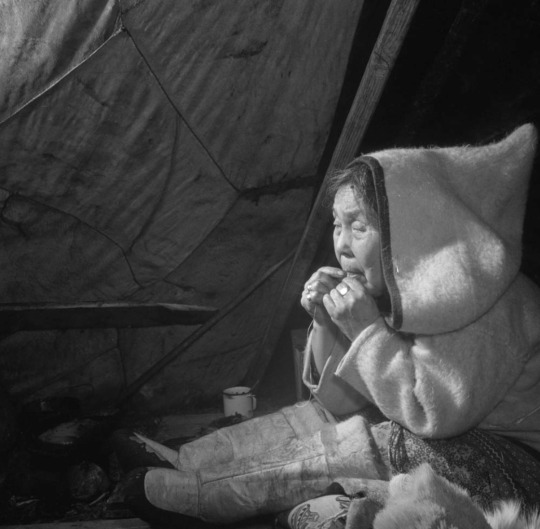
Mrs. Duval threading needle [William Duval's wife, Aulaqiaq. Although blind, she was still able to thread the needle and sew.]
Pangnirtung, Northwest Territories (Current day Nunavut), 1946 Library and Archives, Government of Canada. Archives/Collections and Fonds - Item ID #3192235 (x)
Aulaqiaq was the second wife of German-born American whaler, William Duval. Duval had his first whaling expedition to Arctic Canada in 1879, leaving back to the United States in 1883, and finally permanently returning to the north in 1884. William integrated well into Inuit society, as he became fluent in Inuktitut and was given the name of Sivutiksaq (which translates as harpooner).
Aulaqiaq and William had four children, two of whom survived childhood (daughters Towkie and Alookie, born around 1900 and 1902, respectively). Aulaqiaq and William still have many descendants in Baffin Island region of Nunavut currently.
Unfortunately, I could not find much information on Aulaqiaq herself, aside from her marriage to William Duval, and the children they had together.
Sources: (x) (x)
#aulaqiaq duval#aulaqiaq#william duval#nunavut#northwest territories#inuit#indigenous#indigenous history#canada#canadian history#canadian archives#archives#government of canada#history#whaler#1946#1940s#20th century
12 notes
·
View notes
Text
The fact that there's at least three (and maybe even more) cults in the Philippines that had been claiming to be indigenous groups while not being indigenous at all because they believe that they're the true rulers of the country is absolutely both fascinating and disturbing.
The fact that at least one of these groups blatantly claim indigenous status just so they could claim independence from the government when none of their leaders have any confirmed tribal affiliation too is also really annoying.
#mayaposts#mayapino#philippines#this is not only inspired by the whole federal tribes thing that happened the past few weeks ago but also that whole shit ass#maharlika nation thing like goddd the way they talk and how they take advantage of ppl pisses me off#and then that maharlika nation thing keeps saying that they're ackshully independent bc theyre indigenous when no organization recognizes#them and most of the residents of the area said that they moved to the fucking mountains that they coaim as their territory???#and how nice and labish their buildings and furniture are while so many peopek only signed up bc rhey gave them free ''money''#which doesn't even have monetary value outside their word and gated community#like i would laugh if i didnt saw a poor mother crying tears of joy bc she thought the money they printed could pay for her son's surgery
10 notes
·
View notes
Text
Clad in a crisp white dress shirt, Wilbert Antoine, 77, puts the finishing touches on a vest he made.
"It's exhilarating," said Antoine, beaming with pride about his first sewing project.
His thoughts linger on his mother, a master seamstress who made her children moccasins and mitts before they left to residential school.
"It all got taken away," said Antoine. "I'm very, very humbled and grateful to be able to do the things that my mom had made for me."
Antoine is a member of Łı́ı́dlı̨ı̨ Kų́ę́ First Nation in Fort Simpson, N.W.T. He's taking part in a sewing workshop for men — a first for the community. [...]
Continue Reading.
Tagging: @newsfromstolenland
#cdnpoli#Indigenous art#NorthWest Territories#Dene#Dehcho Nation#Łı́ı́dlı̨ı̨ Kų́ę́ Nation#Firs Nations#Fort Simpson
110 notes
·
View notes
Text

Aurora Meets Kokopelli, beadwork by Margaret Nazon
#beadwork#space art#indigenous#indigenous art#northwest territories#bead art#space#science art#blue#abstractart#modern art#contemporary art#aurora#northern lights
82 notes
·
View notes
Text
Aboriginal Community Mourns Second Death in Australian Police Custody
The Warlpiri community in Central Australia has been shaken by the death of Kumanjayi White, a 24-year-old Aboriginal man who died while in police custody at an Alice Springs supermarket. This tragedy has reopened painful wounds for the remote Yuendumu community, which also lost 19-year-old Kumanjayi Walker in a police shooting six years ago. Calls for Transparency and Independent…
#Aboriginal deaths police custody#Alice Springs police#Indigenous deaths in custody#Kumanjayi Walker#Kumanjayi White#Northern Territory news#police accountability#Warlpiri community#Yuendumu
2 notes
·
View notes
Text
idk who needs to hear this but not a single being on earth owns land
#are there ppl indigenous to the lands and the first peoples there? yeah. but the idea of 'owning land' is a very colonial mindset.....#they have more of a right to be there but to act like anyone can own a piece of earth is really fucking dumb and counterintuitive#i dont even think most indigenous people see it that way like at all. a lot of native americans believe they are one with the land but#that doesnt denote possession of it. erase the idea in your head you ever actually own anything#everything you have could turn to dust. you own nothing. not even your body. you're borrowing it from the earth.#you dont see animals walking around claiming they own land. can they be territorial? yeah. but its not about the specific land theyre on#and more about self preservation and keeping other animals away from them to stay safer
10 notes
·
View notes
Text


National Day of Awareness for Missing and Murdered Indigenous Women and Girls
Advocating for justice, honor, and remembrance, ensuring visibility and action to address the safety and rights of indigenous women and girls.
A serious problem has been going on for many years surrounding the high statistics of indigenous women and girls who go missing or are murdered each year in Canada, the United States and other countries. Indigenous or native women and girls have a much higher vulnerability to violence, particularly in relation to crimes such as sex trafficking, abuse and more.
From 2001 to 2015, the homicide rate for indigenous women in Canada was almost six times higher than for other women. In the United States, native women are at least two times as likely to experience violence than women from any other demographic. It is also estimated that the murder rates for native women are ten times higher than the national average.
In recent years, many activists, journalists, law enforcement officers, charitable organizations and others have been calling for more attention to be paid to these inconsistencies. The desire is to increase public awareness about the issues while improving access to the urgent support that these women and girls so desperately need.
History of National Day of Awareness for Missing and Murdered Indigenous Women and Girls
An important impetus for the National Day of Awareness for Missing and Murdered Indigenous Women and Girls came through a Canadian artist named Jaime Black. In the early 2000s, Black used her influence to start the REDress project as an art installation to call attention to the epidemic of missing and murdered indigenous women in Canada and the US. This artistic expression led to hundreds of red dresses being donated for use in future installations and also was the start of REDress Day being celebrated on May 5. Each year, many different important spaces house REDress installations, including the Smithsonian National Museum of the American Indian in Washington D.C. in 2019.
The official campaign for the United States to declare this as an awareness day was started in 2017 by two senators from Montana. In 2018, the US declared this same day that had started as REDress Day, but the name was adjusted to the National Day of Awareness for Missing and Murdered Native Women and Girls.
How to Observe National Day of Awareness for Missing and Murdered Indigenous Women and Girls
Get involved with this important day of awareness by participating in some of the following activities:
Learn More About Missing and Murdered Indigenous Women
One of the most important ways to participate in this national day of awareness is to commit to getting more educated and informed, and then sharing this with others in your sphere of influence. Learn more about the statistics and needs by visiting the website of the National Indigenous Women’s Resource Center, the US Department of Indian Affairs or other important resources.
Read the Apology to Native Peoples
In 2009, the United States Congress issued an acknowledgment and apology to the Native peoples for the way the US government has treated them with depredations and policies that were to the disadvantage of native and indigenous peoples. Access this apology online and read through it in observance of the National Day of Missing and Murdered Indigenous Women and Girls.
Source
#MMIWG monument by Myrna Pokiak#Yellowknife#Northwest Territories#Finding Peace Monument by Halain De Repentigny#Whitehorse#Yukon#Canada#the North#First Nations#summer 2023#public art#sculpture#travel#original photography#vacation#tourist attraction#landmark#cityscape#National Day of Awareness for Missing and Murdered Indigenous Women and Girls#RedDressDay#REDressDay#NationalDayofAwarenessforMissingandMurderedIndigenouWomenandGirls#Native Americans#5 May
4 notes
·
View notes